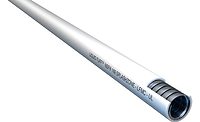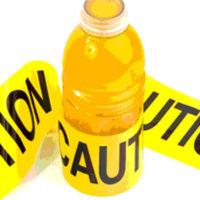Separate zones have become a given in food processing. To ensure optimal public safety, it is important to consider cleaning processes designed specifically for those zones and also to keep cleaning activities separated to avoid cross-contamination. Success requires an understanding not only of the nature and constraints associated with a given zone but also of how cleaning works and why sanitization alone is not sufficient. Successful critical cleaning also requires having an educated workforce.
Critical Cleaning
Soil is matter out of place. Cleaning is removing matter out of place. Sanitizing is, of course, essential. But first, the soils must be physically removed to ensure public safety, not to mention for aesthetic reasons.
Cleaning encompasses janitorial activities as well as cleaning areas that come directly in contact with food, such as work surfaces, processing equipment and the food material itself. Cleaning is often divided into general cleaning and precision cleaning; precision cleaning has been described as removing the soil from something that already looks pretty clean to begin with. We prefer that you instead consider which activities are actually critical cleaning. Critical cleaning may be thought of as cleaning wherein, if you neglect to do it, the product is immediately compromised. Critical cleaning can also be cleaning at a key point in the process that can reduce the need for more elaborate and expensive cleaning at a later stage. One example from everyday life of where immediate cleaning may be the critical step is the lasagna pan. You finish dinner, clear the table and ignore the pan until the following day. This gives the scraps of lasagna time to cure, react and generally form an adherent mess. You would have saved time and effort by cleaning the pan immediately. Look around your processing facility; you are apt to find analogous examples. Critical cleaning also includes ensuring that sufficient soil is removed so that sanitation can be successfully conducted. Determining those activities in any zone that are critical cleaning is helpful in designing cleaning and sanitation protocols and also in educating workers. Educated workers do a more thorough, consistent job, and they tend to be more alert to potential problems. This is particularly important in food processing, because the presence of biologic components can add more unexpected variables.
The Cleaning Process
Cleaning is a process, not just a chemical. Cleaning processes tend to include not only the cleaning chemistry (or cleaning agent) but also force, temperature and time. Most cleaning activities consist of three steps: washing (sometimes also called cleaning), rinsing and drying. The wash step separates the soil from the surface to which it adheres, moves the soil away from the surface and keeps soil from redepositing on the surface. The rinse step removes residual cleaning agent and may also continue the washing action. The rinsing agent is typically water. In some but not all instances in food processing, excess water must be removed by drying. These three steps involve the use of different materials and frequently different equipment. It is important to consider all of these steps together when designing or changing a cleaning process. It is also important to consider how the methods and materials of cleaning can differ from one area to another, depending on what needs to be cleaned, and the risks of less-than-adequate cleaning.
Clean and Sanitized
Surfaces can be microbiologically clean (sterile), yet physically dirty. It is possible to understand and guard against the presence of contaminants with the largest potential for harm and not pay enough attention to other contaminants. For example, contaminants in which pathogens can grow and multiply are necessarily of great concern. But it is important to consider other contaminants as well. Soil provides attachment sites and nutrients for organisms and protects them from the actions of detergents and sanitizing agents. It has been shown that an effective cleaning step can remove most of the organisms from surfaces, with sanitizing chemicals killing those few that remain.[1]
It is also important to realize that small holes and crevices are very prone to contamination buildup and are harder to clean. This can be a problem with clean-in-place processes, where there may be hidden surfaces, such as inside tubing. It can also be a problem with janitorial equipment, which may not come in direct contact with food but can contaminate the workspace if not thoroughly cleaned. There can be moving parts with hidden access areas that are not easily cleaned. We see concerns about cleaning in other industries as well. For example, in the electronics industry, it is challenging to remove contamination from small spaces under or between closely spaced components, resulting in reduced yields and unacceptable field failure. Water, which has relatively high surface tension, does not easily penetrate these small spaces. Saponifiers (soap-like products) are used to reduce the surface tension of water, but then the problem shifts to the ability of using pure rinse water to get into these same spaces to carry away the water-based cleaning agent.
Using a Zone Approach
Establishing zones within the food processing facility is an important technique for reducing the likelihood of cross-contamination.[2] Frequently, cross-contamination is of one food type with another, or raw or semiprocessed foods with more finished products. The zone approach is also applied to the cleaning of food processing equipment and facilities, including walls and floors.
Cleaning within a zone
Just as the nature and risk of contamination varies from one zone to another, differences in the methods employed for cleaning vary. Both cleaning of food processing equipment and maintenance (janitorial) cleaning become more challenging as the degree of required cleanliness increases. High-risk areas usually require the most cleaning. However, there are several caveats. Postponing cleaning until the last step is generally more expensive and less efficient. Soils that are allowed to remain on surfaces are harder to remove. Simple, inexpensive methods used early in the process can lessen the need for more elaborate methods later on. Also, as mentioned earlier, it is important to realize that sterilization or treatment with sanitizing chemicals does not replace cleaning. Sometimes, the assumption is made that a final, aggressive sanitizing step makes cleaning along the way unimportant. The problem is that dirt, even dead dirt or dirt that has never been alive, is undesirable in the final product and can potentially compromise attempts at sanitation.
Cleaning between zones
The least chance of cross-contamination of cleaning materials is to have separate janitorial cleaning in each zone. This includes not only separate cleaning equipment and supplies of cleaning agents but also personnel. In other words, cleaning personnel for a high-risk area work only in that area and do not clean a lower-risk area. Conversely, personnel who clean a low-risk area do not subsequently move to clean a higher-risk area.
Except in very large facilities, such complete segregation of personnel and supplies may not be technically or economically feasible, so cleaning personnel, particularly janitorial personnel, may be expected to clean more than one area. In such cases, a “most clean to most dirty” approach can minimize the likelihood and impact of contamination. Cleaning personnel clean the highest sanitary-risk areas first, always moving themselves in the direction of lower-risk zones. Cleaning equipment, including janitorial equipment, should be segregated by zone.
There are analogies to this in both everyday life and critical industrial processes. As a parent, you probably would not consider bathing your baby in the same bath that you previously used to clean an automobile part. In manufacturing, the purest water is used for the final rinse, where the risk of residual contaminants is greatest. To conserve water, the runoff, which is now less pure due to whatever contaminant it picked up during the final rinse, is then allowed to cascade to the previous rinse. This sequence then continues, with the rinse water moving to the next previous rinse, that is, in a reverse direction to the product flow.
Transition areas
Care must be taken when personnel, product or equipment enter or leave a given zone. Depending on the criticality of activities, it may be appropriate to adapt techniques employed by other high-tech manufacturing industries. Examples of important processes or factors include airflow, product flow, personnel protection garments and personnel training.
Reassessment of currently used sanitizing and cleaning tools can be helpful. Chemical foot baths may be used to sanitize employee boots as they enter a controlled area. Even if the bath is chemically sanitizing, a clod of dirt could remain, later to dislodge and contaminate the area. Also, if the bath is not adequately maintained and replenished, it can become a “microbial soup,” becoming a source of rather than a solution to contamination.[3]
In an analogous industrial situation, we encountered a step where product was being transported from a “clean” area to a “very clean” area via a conveyor belt. Although the belt surface was cleaned before the product was placed on it, the gears and driving mechanisms of the belt were not. As a result, lubrication grease and other contaminants were carried into the very clean area and recontaminated the product.
Prevention and Education
The best protection against unwanted contamination is to have a well-educated workforce. Employees who see the product every day can be quick to spot problem areas, if they understand where the problems can arise. We distinguish between employee training and employee education. Training is developing a detailed sequence of how to perform a particular task or group of tasks, such as the order of putting on protective gowns and gloves. Education is teaching why such a sequence is important, such as why a different order of gowning can result in contamination. This distinction is as important for the maintenance staff as for those who directly handle the food products. If employees are educated to understand the consequences of all contamination, they can quickly spot potential problems and can also frequently suggest ways to improve the process.
As in most areas of effective manufacturing, the best defense is a strong offense. Gould refers to the 1:10:100 rule.Spend $1 to prevent a problem, $10 to catch it before shipping or $100 to deal with it after shipping.4 Each educated employee can and should be a nosy detective, keeping a sharp eye for potential contamination sources. Look especially in the nonobvious places. Then design cleaning protocols that can be tested and verified. Verification is not a one-time task. Periodic testing can make sure that processes remain in control of potential contamination.
Acknowledgment: We thank Jim Unmack, CIH, for his insightful comments.
 Ed Kanegsberg, Ph.D., and Barbara Kanegsberg, “the Rocket Scientist and the Cleaning Lady” of BFK Solutions LLC, are industry leaders in critical and industrial product cleaning. They can be contacted at 310.349.3614 or info@bfksolutions.com.
Ed Kanegsberg, Ph.D., and Barbara Kanegsberg, “the Rocket Scientist and the Cleaning Lady” of BFK Solutions LLC, are industry leaders in critical and industrial product cleaning. They can be contacted at 310.349.3614 or info@bfksolutions.com.
References
1. Timmerman, H. 2011. Cleaning in the food processing industry. In Handbook for Critical Cleaning: Applications, Processes and Controls, Kanegsberg, B. and E. Kanegsberg, eds., Boca Raton, FL: CRC Press.
2. www.gmaonline.org/uploadFiles/17D0FC0000007C.filename.LarryCohen_% 5BCompatibility_Mode%5D.pdf.
3. www.foodprocessing.com/articles/2007/256.html.
4. Gould, R. 2012/2013. Food safety modernization act: A view from elsewhere. Food Safety Magazine 18(6):36–41.
The Critical Cleaning Zone




